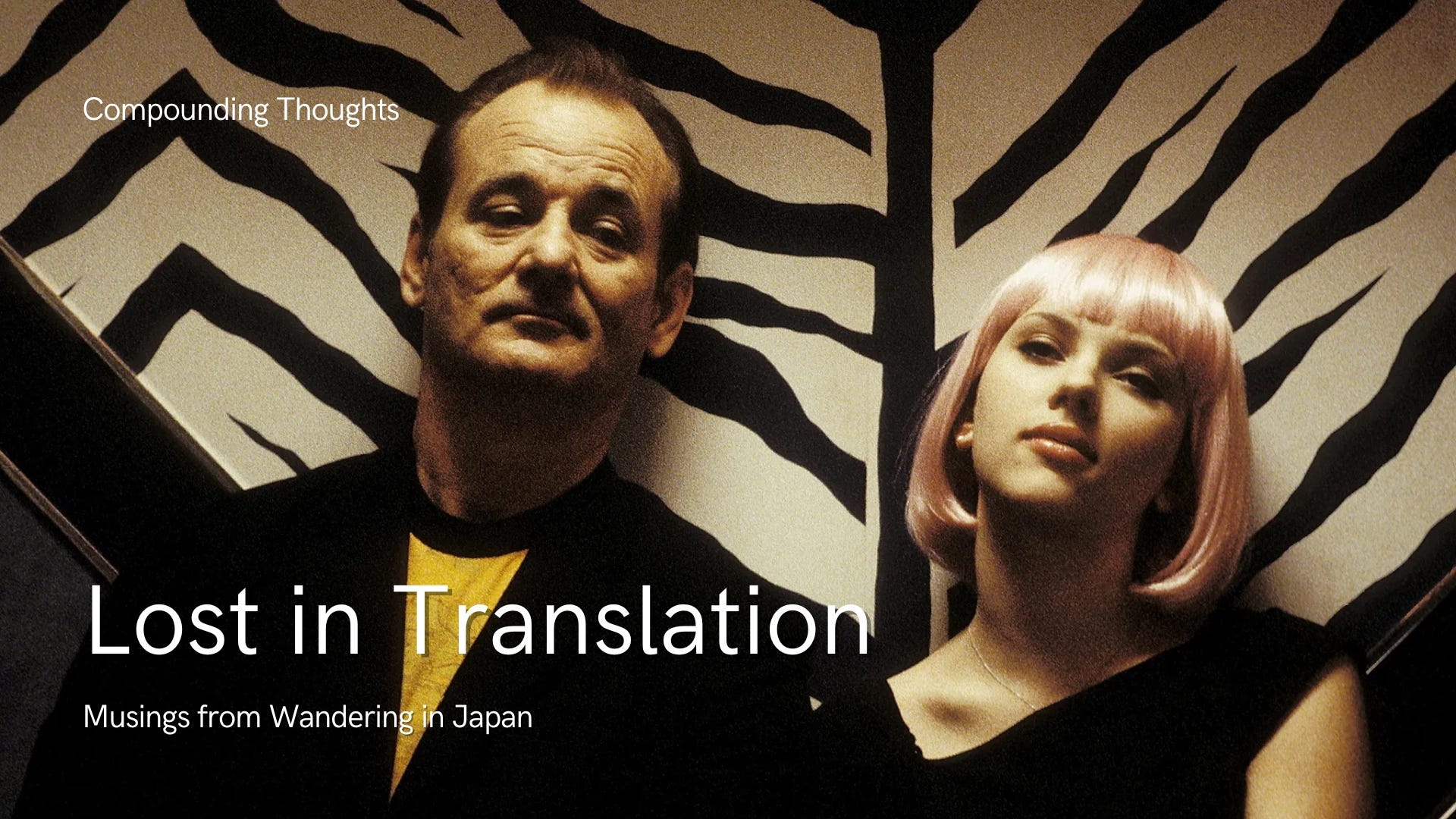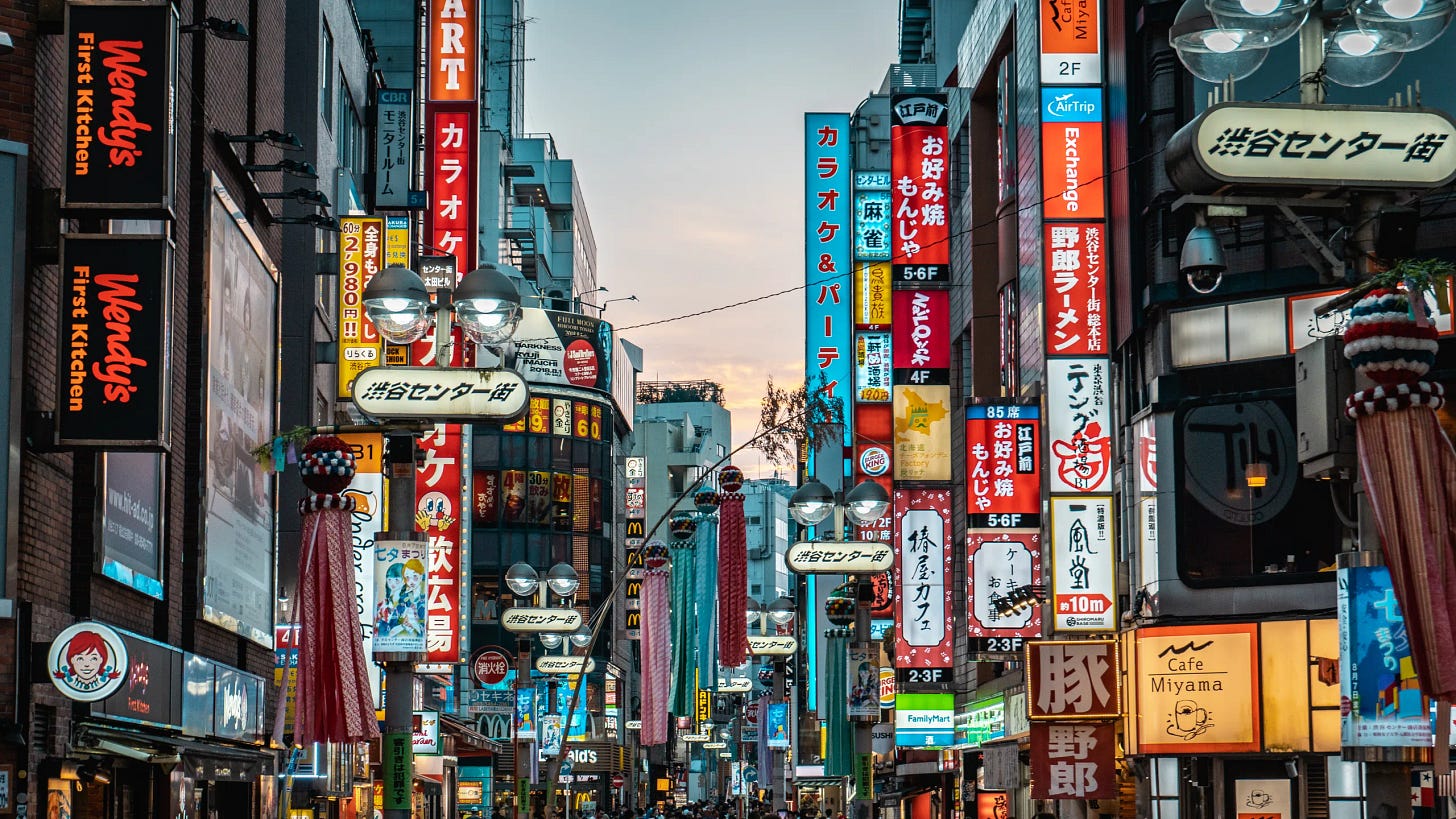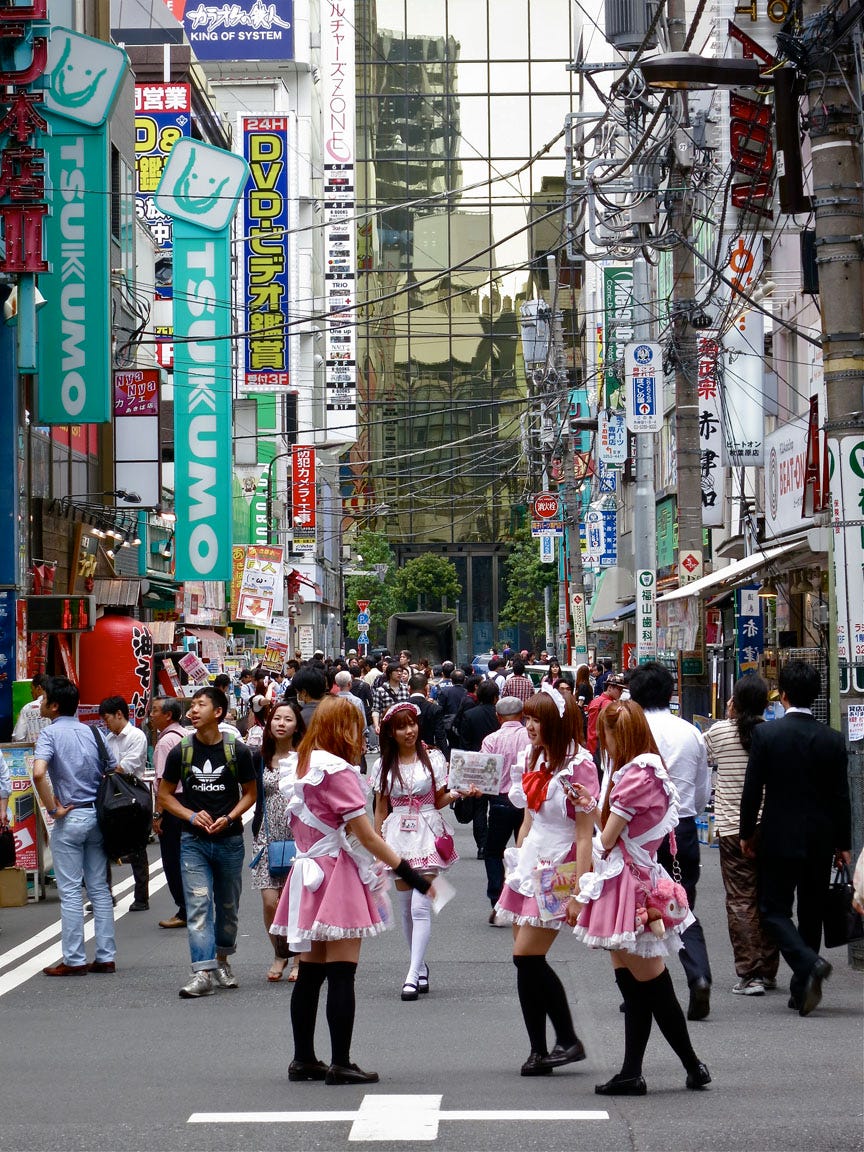I.
The rain fell as if trying to prove a point.
I watched the sky scape blur as the sigh of rainfall ruptured into a shout.
I was exercising.
Loafs of metallic discs hoarded every corner of Gold’s Gym. From a more imaginative perspective, perhaps this place looked less gym, more treasure den of some frugal dragon.
I had been to Gold’s Gym before. But not this one. Some rituals were the same, some different. Upon entry, I had to remove my shoes and borrow from a cabinet of secondhand trainers to access the gym. Lifting required the decorum of a bowling alley.
The Gold’s Gym is located on the 9th floor of a multi-use property in the heart of Shibuya. One of Tokyo, and Japan’s, most immediately striking features is it’s real estate zoning. Tokyo leans into its urbanism in ways unseen in the States1. Businesses, offices and residents stack atop each other like a game of jenga. While parts of Japanese culture are highly conservative about tattoos2, the same sobriety does not apply to their physical world. Store signs and advertisements stencil and protrude from glass and metal to create a cacophony of commerce and color.
I filled out a paper form to sign up for a guest pass at the gym. While Japan’s built environment seems to be a generation ahead of our own, it’s digital one seems to be one behind. One visit to book a bullet train online and it is clear that software still has yet to finish eating its sushi.
II.
I write this on the pillowed seat of a subway car. The seats are corduroy and the color of sourdough. They remind me of the upholstery of my grandmother’s Buick. I had not thought about her Buick in perhaps a decade. Funny how memory works.
I look around me. Much is the same as the subway rides I frequent in New York City: passengers tilt over their phones as if in silent prayer. Headphones enforce the boundaries between the the world of I from the world of we.
But much is different.
The trains are spotless and on time. The stations are pleasant — some even offer exceptional views. Merchants at their small storefronts hawk their delectable wears rather than panhandlers.
It is much better.
I write this listening to the new Invest Like The Best episode with the Chainsmokers. One of the DJs mentions the allure of being an explorer. That, in a way, is what I seek. The future is here, and it just isn’t evenly distributed yet. Part of our future is distributed here. I am eager to find it.
III.
My feet are sore from walking the surreal streets of Akihabara. There, blocks and blocks of electric fantasy. What can only be described of department stores that sell toys, trinkets and services devoted to anime, manga and imagination. Cafes are ripe with costumes, alleys litter with arcades.
There is something about variable rewards that teems throughout: the arcade, the the claw machine, the loot boxes. Gamification is prevalent to Japan’s consumer ecosystem. The pop culture is more — childish feels like the wrong word — but less serious. It is visceral throughout the city and monopolizes attention well beyond adolescence. Pop culture and fandom are intertwined; boy bands are sports teams and cartoons are deeply rooted in the zeitgeist. It creates a striking paradox: the industrialism and seriousness of Japanese corporate culture and social rituals jammed next to city blocks devoted to anime and gaggles of girls gushing at video displays of the latest boy band.
At dinner last night I sat next to two Japanese girls. They seemed college age. Both were joined by a six inch figurine of what appeared to be a boy band singer. In America such behavior would be cringe and taboo. Here, in a udon shop where I was the only gaijin amongst groups of young friends, no one blinked an eye. Fascinating.
IV.
What can be learned from these observations? What future is here? Perhaps character, cartoons and animations are underrepresented in mainstream American culture. Perhaps consumer AI applications like Tolans are creating a new zeitgeist that can work.
What else? Humans crave variable rewards. That’s why Whatnot is a five billion company. We enjoy speculation, particularly when it is linked to underlying IP that has sizable fandom.
What else? Perhaps there is more room for oxymorons and contradictions. Cheaper and faster mobility exists in Japan. That enhances the throughput of commerce and culture, and perhaps the result is the physical world begins to look like digital one — interest-based communities that form around shared niches and interests.
The rain fell as if trying to prove a point.
A reminder that one’s setting is a being. A noun; a central character to each our own story.
Your setting is a character in your life; putting yourself in new settings creates new stories for you to live. New stories creates new experiences; new experiences leads to new observations, new observations collide into insight. Perhaps that is the lesson.
Gold’s Gym denied entry to individuals with visible tattoos on their body.






